2025-ongoing
Location: Northern Ghana (pilot), expansion planned
Pioneering market entry strategy for affordable vision care in underserved communities
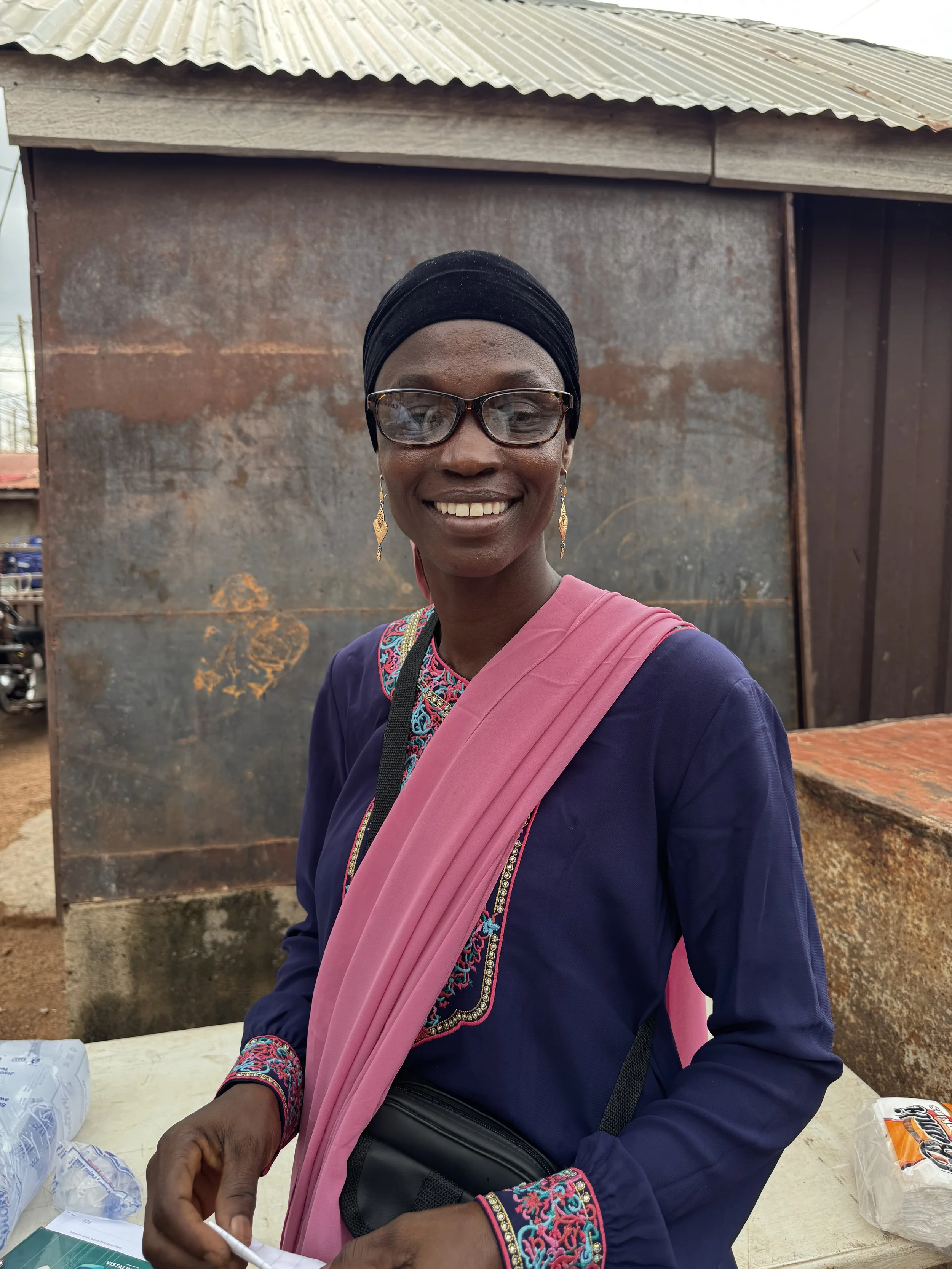
Pop-up clinic in Kanvili market: on-the-spot testing and assembly. A happy teacher with her new glasses.

Satisfied customer receiving his second pair of glasses, this time sunglasses
My Role:
I am leading market entry strategy design and pilot oversight remotely from London. My focus: transform innovative technology into a scalable, market-based health service model.
Team:
Leading cross-functional collaboration with iDE Ghana operations (15+ sales agents, 3 managers), GV2020 technical staff based in Canada, and local health professionals including ophthalmic nurses.
Key Contributions:
Co-leading market entry strategy and partnership framework design (between Global Vision 2020 and iDE) and with key stakeholders
Co-leading customer segmentation and Theory of Change development
Leading remote operations oversight and rapid learning cycle design
Developing a strategic ecosystem mapping with health authorities and local partners
Developing scalability models and market entry plans to other 3 countries
Global Vision 2020 (GV2020) developed the USee system - an innovative, ultra-affordable eyeglass testing and assembly tool that enables on-the-spot prescription determination and immediate fitting. The system uses:
Patented adjustable lenses for quick prescription testing
Colour-coded lens packs for streamlined selection
Snap-in frames that can be assembled immediately
Price point of GHS 200 (~$20 USD) - a fraction of typical market rates
iDE (International Development Enterprises) is a global NGO with deep experience in last-mile distribution and market systems development, with established rural networks and trained sales agents across Ghana. iDE has presence in more than 10 countries worldwide.
Globally, 2.6 billion people suffer from uncorrected refractive errors
This is the leading cause of vision impairment worldwide, representing a massive underserved market. In Ghana alone, nearly 90% of low vision cases are preventable, yet only 5% of people with refractive errors wear corrective glasses. The barrier isn't awareness - it's access and affordability.
Traditional optical supply chains charge GHS 650-1,000 (~$65-100 USD) for glasses, pricing out the majority of people who need them. Northern Ghana has been described as an "optometrist desert," leaving millions struggling with impaired vision that affects their education, livelihoods, and quality of life.
AUDIENCE & CLIENT
Primary Users:
People in Northern Ghana experiencing vision impairment - from students unable to read blackboards to market traders struggling with daily tasks. Most didn't know they needed glasses; they experienced vague symptoms (headaches, eye strain) without connecting them to vision problems.
Customer Segments Identified:
Urban literates (salaried workers)
Market traders (informal business owners)
Rural communities (largest need, least access)
Students and youth
Client:
Rural entrepreneurs and sales agents who would eventually deliver this service as a sustainable business model, creating livelihoods whilst solving a critical health access problem.
The Pilots
-
I designed the partnership framework and pilot structure to validate three critical questions: desirability (do people want these glasses?), viability (can this be financially sustainable?), and feasibility (can we build reliable delivery systems?).
My actions:
Established shared success metrics between iDE and GV2020
Designed hypothesis-driven pilot framework
Mapped iDE's existing assets for distribution leverage
-
I led comprehensive market research to understand Northern Ghana's vision care ecosystem before launching operations.
What I discovered:
Mapped customer journeys: most people experience symptoms without recognising need for glasses
Analysed competitive landscape: legitimate providers too expensive, cheap alternatives unregulated/harmful
Identified trust barriers: people wanted certified professionals, not neighbours selling glasses
Strategic insight: We weren't selling glasses - we were selling discovery of a problem people didn't know they had.
-
I oversaw five pop-up clinics across two rounds, remotely coordinating teams and rapidly adapting our approach based on real-time learnings.
Pilots delivered:
Week 1 (May 28-30): 3 locations, 23 team members, 245 people tested, 84 glasses sold (34% conversion)
Week 2 (June 11-12): 2 locations, 9 team members (leaner model test), 127 people tested, 30 glasses sold (24% conversion)
What I learned:
70% of people tested didn't know they needed glasses
Proximity dramatically increased uptake - convenience mattered more than price
Distance glasses (GHS 200) were our "wow product" - life-changing value
Professional presence (ophthalmic nurses) built essential trust
Optimal team size: minimum 10 people for quality service delivery
-
I led a workshop in Ghana to analyse customer data to develop a segmentation framework that would guide expansion strategy.
Framework I created:
Upper Segment: High income, no sensitisation needed (small group, quick wins)
Middle Segment: Moderate income, minimal awareness needed
Low Segment: Lower income, moderate sensitisation required
Market Traders: Trust-building essential, convenience critical
Rural Communities: Largest need, substantial awareness campaigns required
Strategic implication: Start with easy segments to build social proof (low-hanging fruit and identify champions), then systematically move down the pyramid.
-
I translated pilot insights into replicable frameworks for scale.
What I developed:
Theory of Change: Articulated impact logic from inputs to systems-level outcomes
Operational blueprints: Documented team composition, customer flow, quality assurance protocols
Partnership ecosystem map: Identified all critical actors (health authorities, optical suppliers, certified professionals, influencers)
Scale-up pathways: Created roadmap for multi-country adaptation
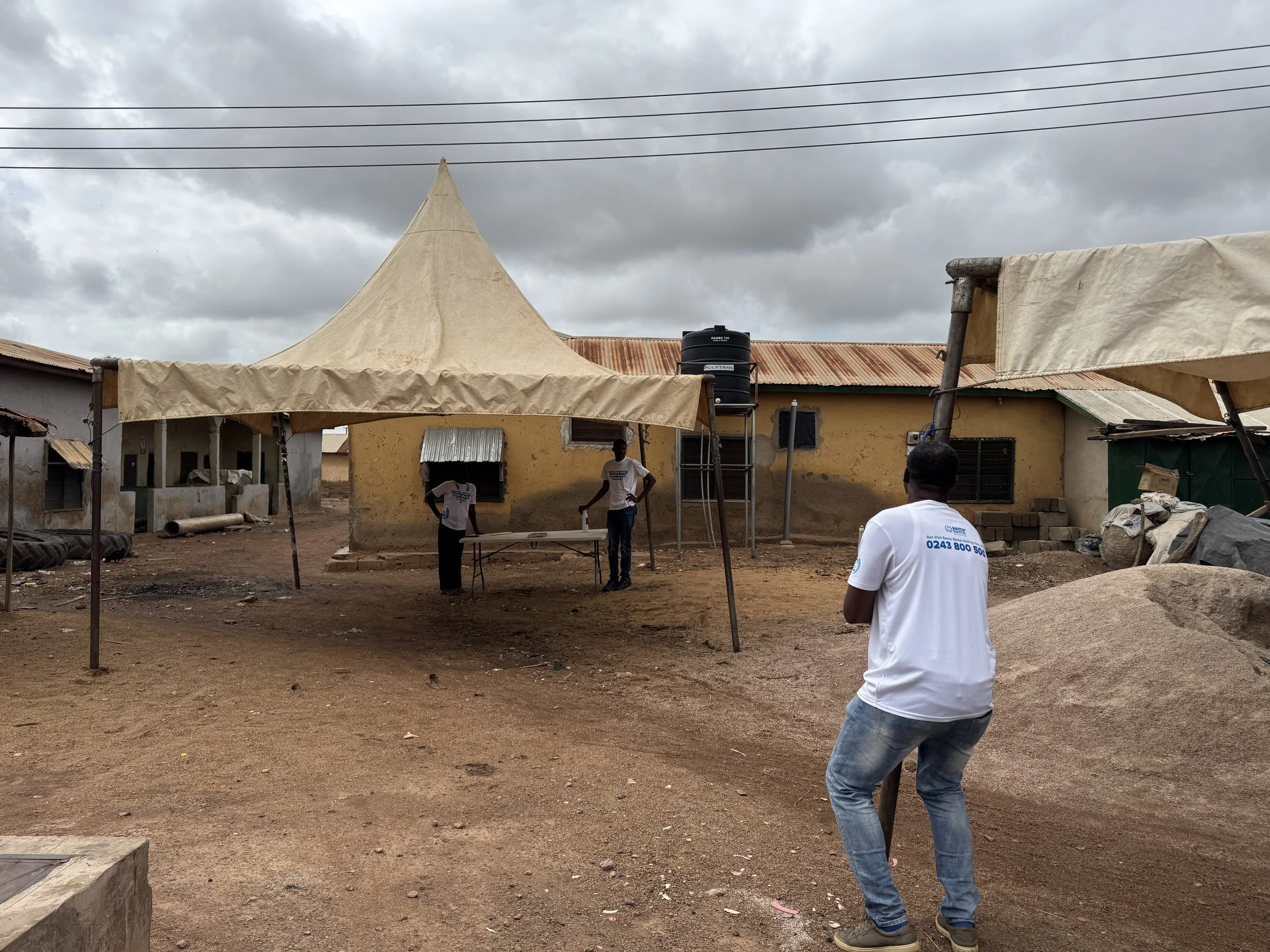
Set up at Lamashegu market. Tamale, Ghana
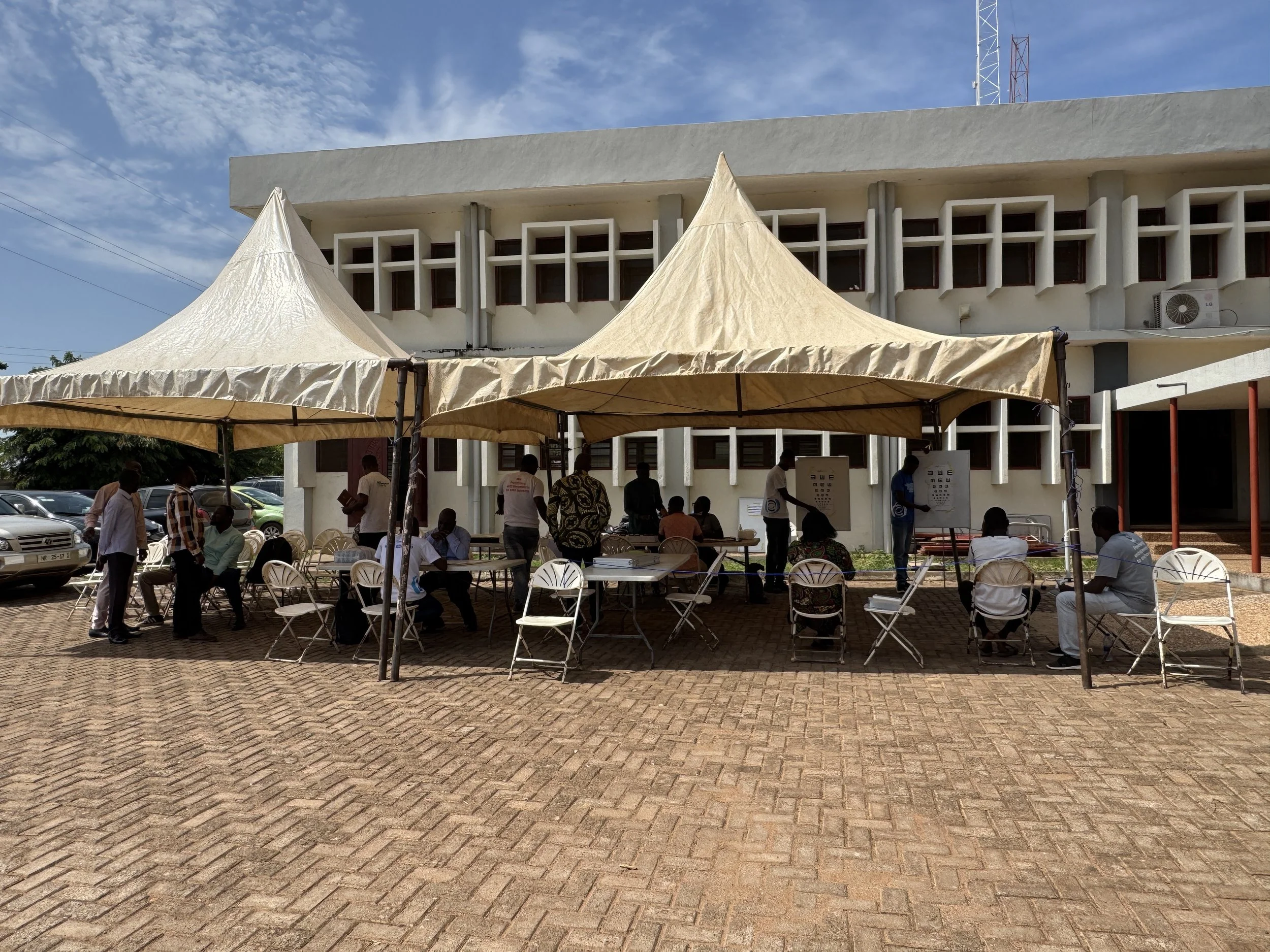
Set up at the University of Development Studies, City Campus, Tamale

Vision board used for testing
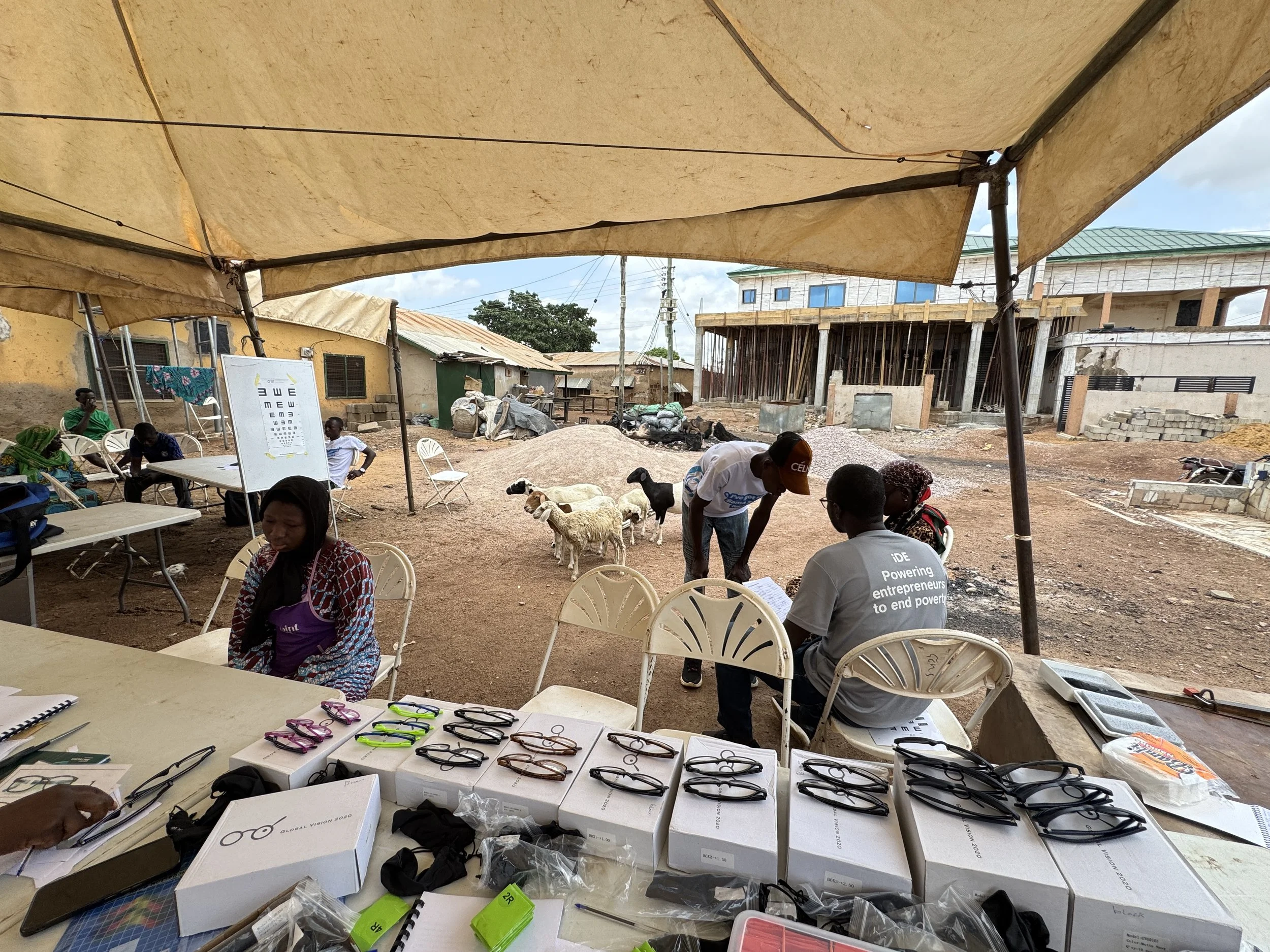
Lamashegu market pop-up clinic
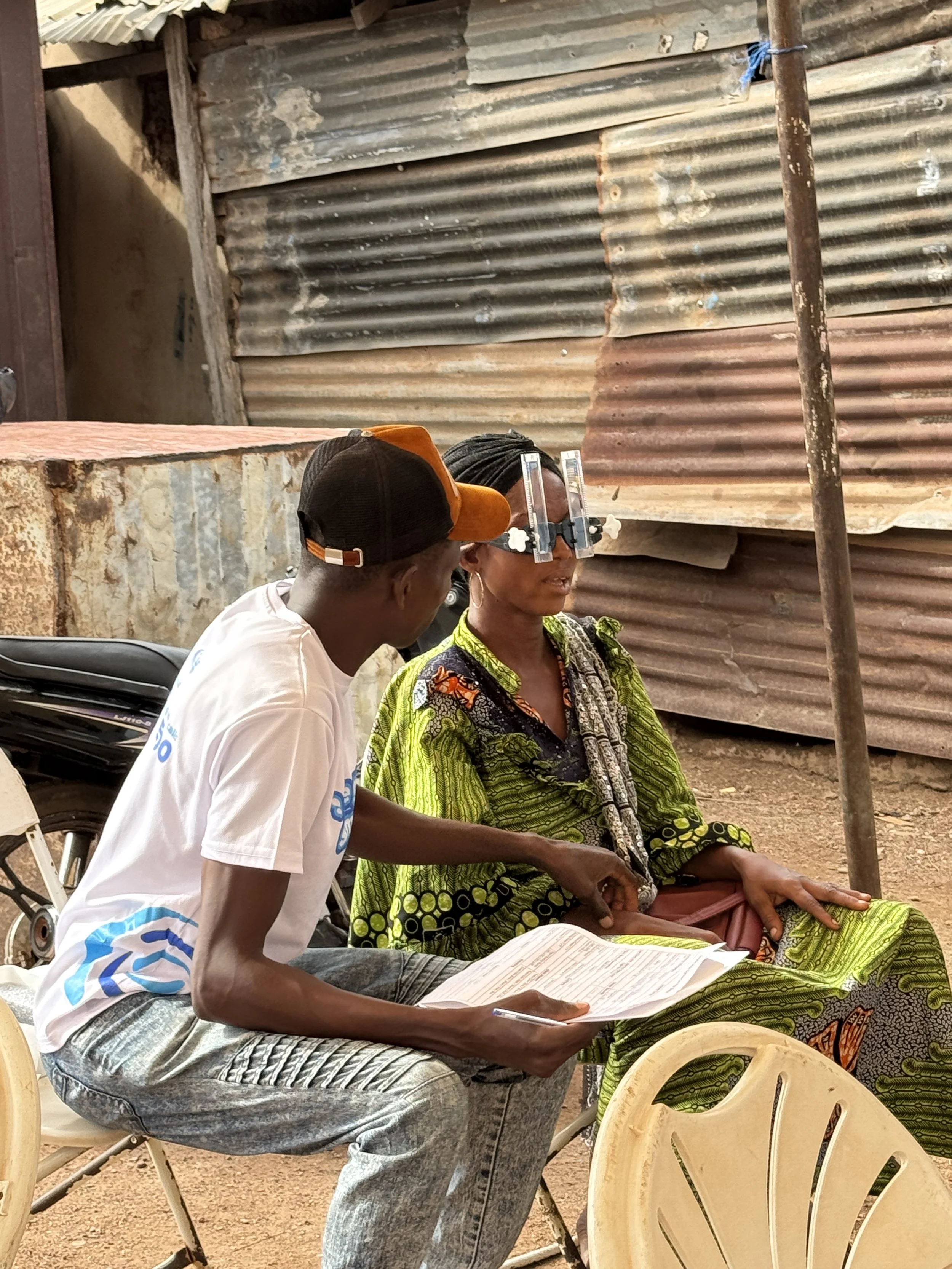
Woman being tested for distance glasses
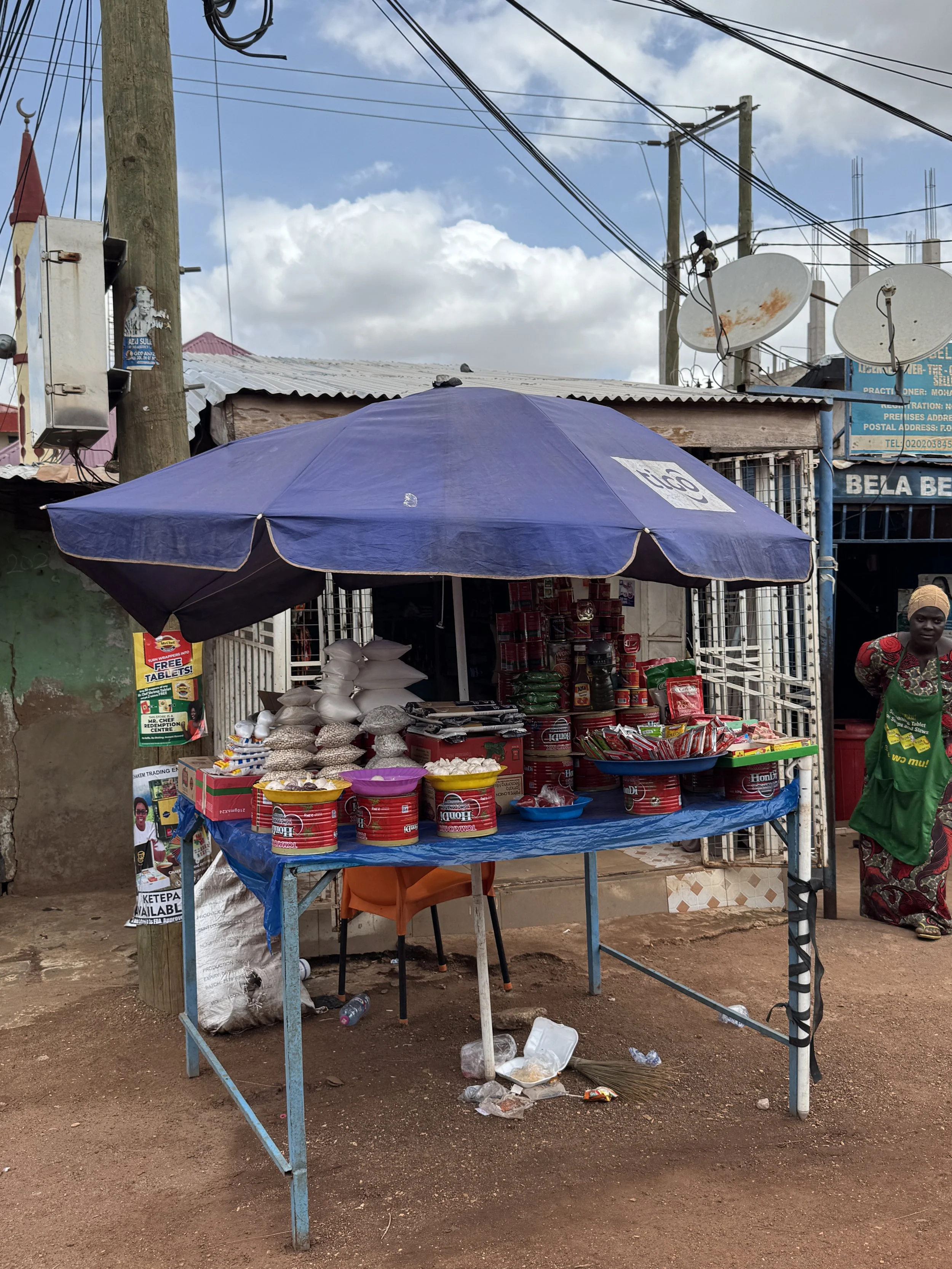
Other stalls in Lamashegu market
IMPACT & OUTCOMES
Pilots Results (5 pilots in 1 month)
372 people tested across 5 pop-up clinics
110 glasses sold (30% overall conversion rate)
Validated demand for affordable, certified vision correction
Validated unit economics: GHS 200 glasses at 30% conversion created sustainable margins whilst remaining 70% below market prices
Strategic Assets Created
Customer segmentation framework guiding expansion priorities
Theory of Change linking activities to systems impact
Operational blueprints ready for replication
Partnership ecosystem map for sustainable scale
Scale Potential
Transformed $170K pilot into documented pathways for multi-country deployment
Generated external interest (4 global organisations to partner with), positioning project for significant expansion (outside Ghana)
Attracted interest from 3 additional country programmes representing 15M potential users
Challenges
Remote coordination: Managed field operations from London through structured protocols, regular check-ins, and strategic field visits.
Building credibility: Addressed scepticism about low prices by integrating certified professionals and emphasising quality certifications.
Partnership alignment: Navigated the complexity of aligning two organisations with different cultures (NGO vs social enterprise), decision-making speeds, and success metrics
Competing with an unregulated market: Positioned as "affordable professional" tier rather than competing on price alone with harmful cheap alternatives.
Lessons Learned
Technology alone doesn't create markets - understanding ecosystems does. The most valuable strategic work was mapping customer segments, building trust with health authorities, and designing service experiences that balanced accessibility with professionalism.
Disciplined experimentation before scaling prevents expensive mistakes; our learning-first approach generated insights that will accelerate genuine expansion rather than premature replication of unvalidated models.



